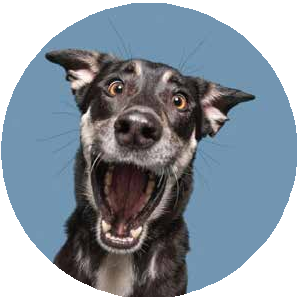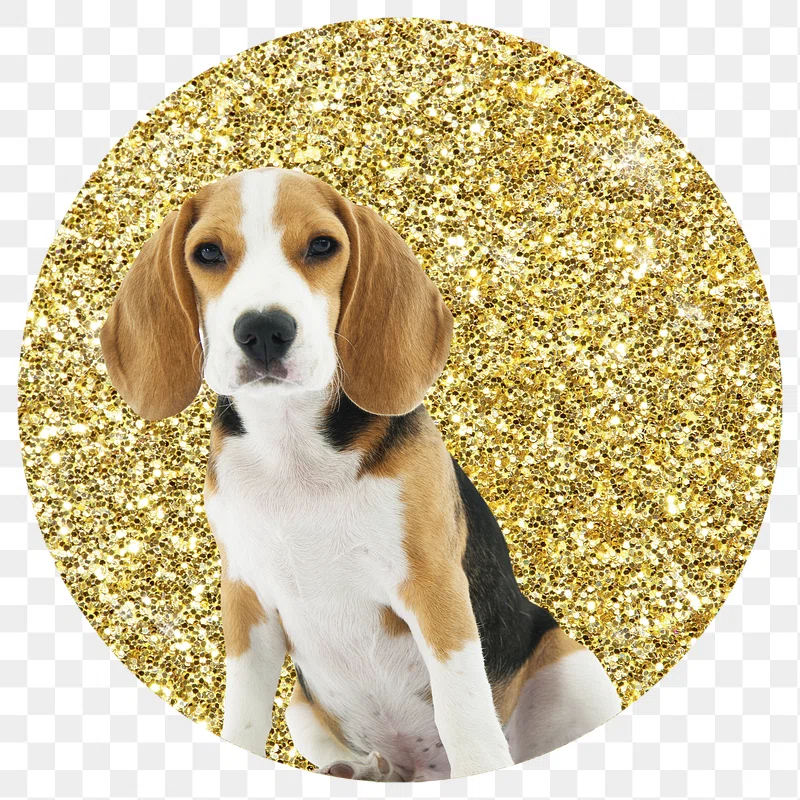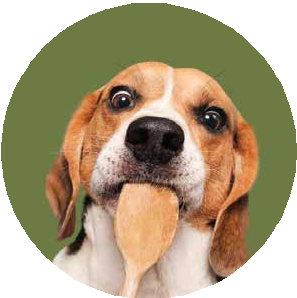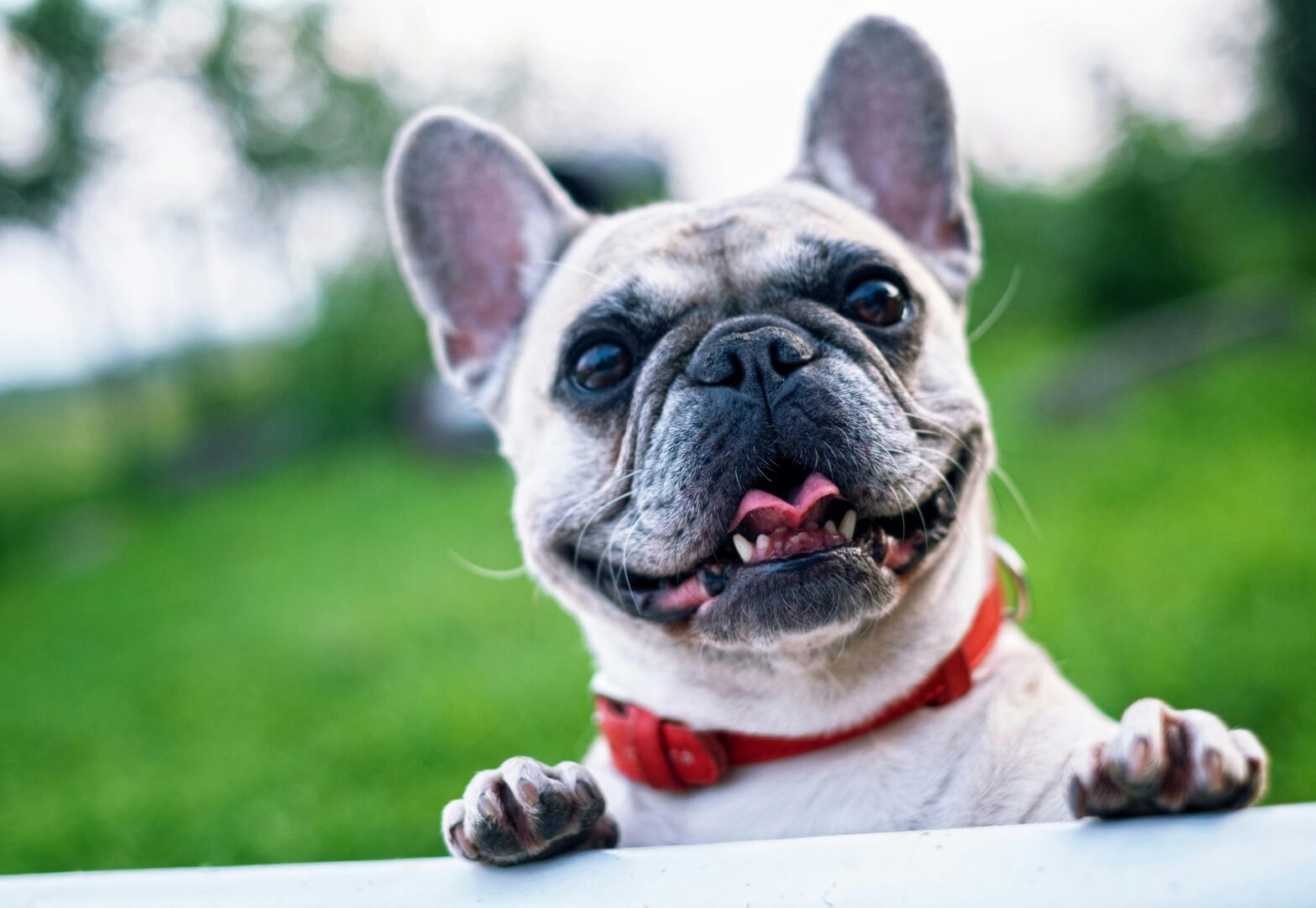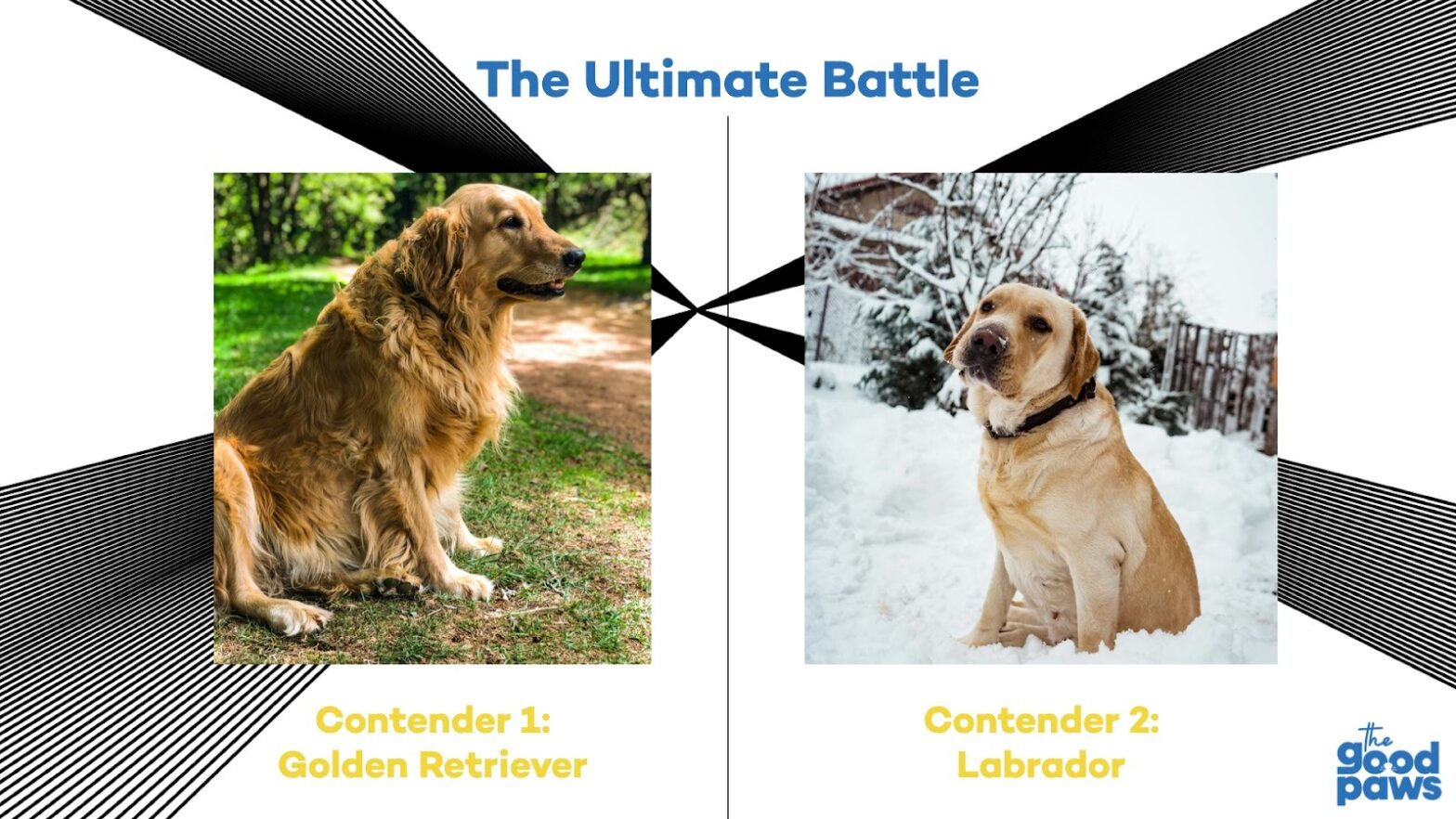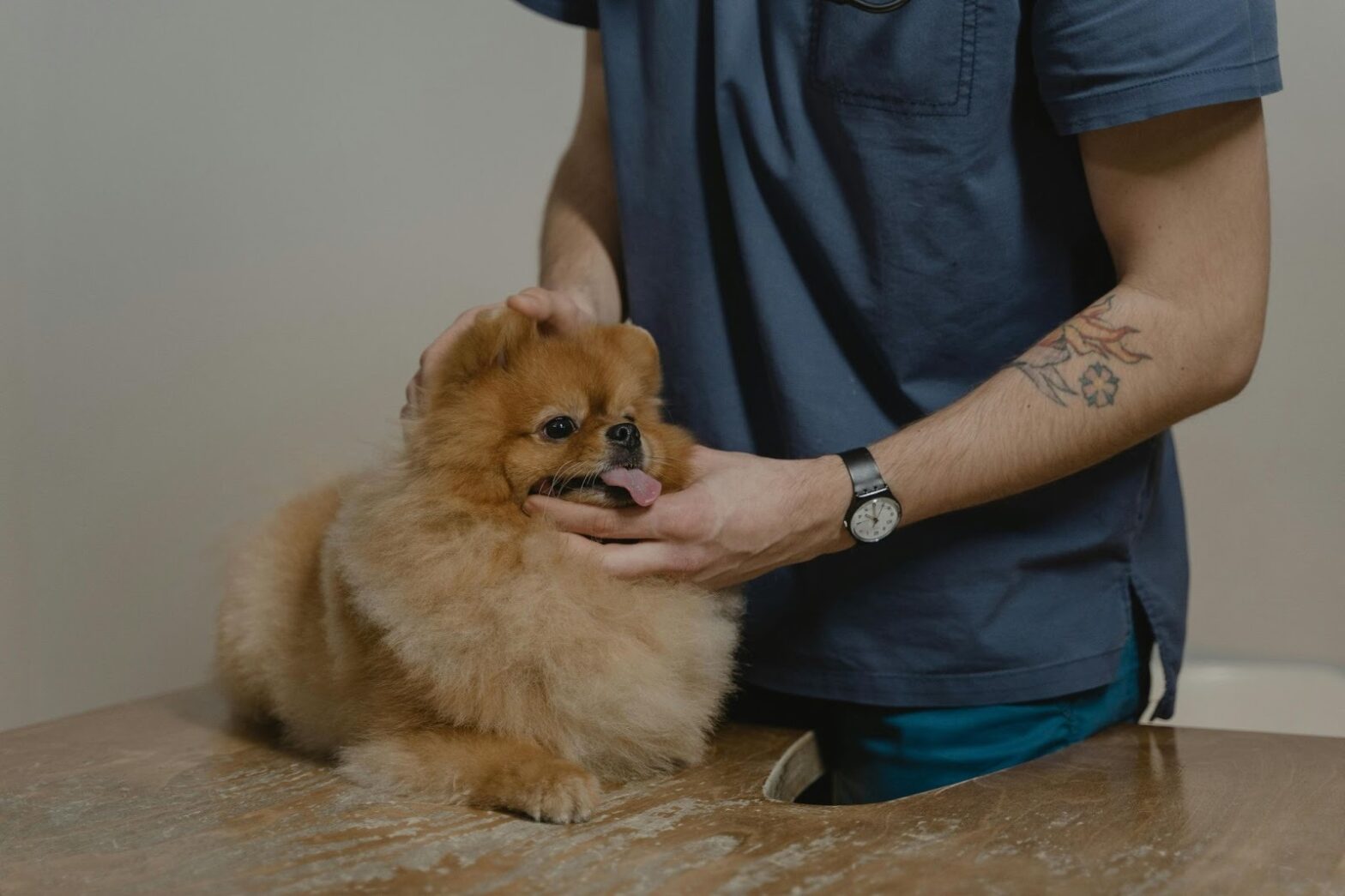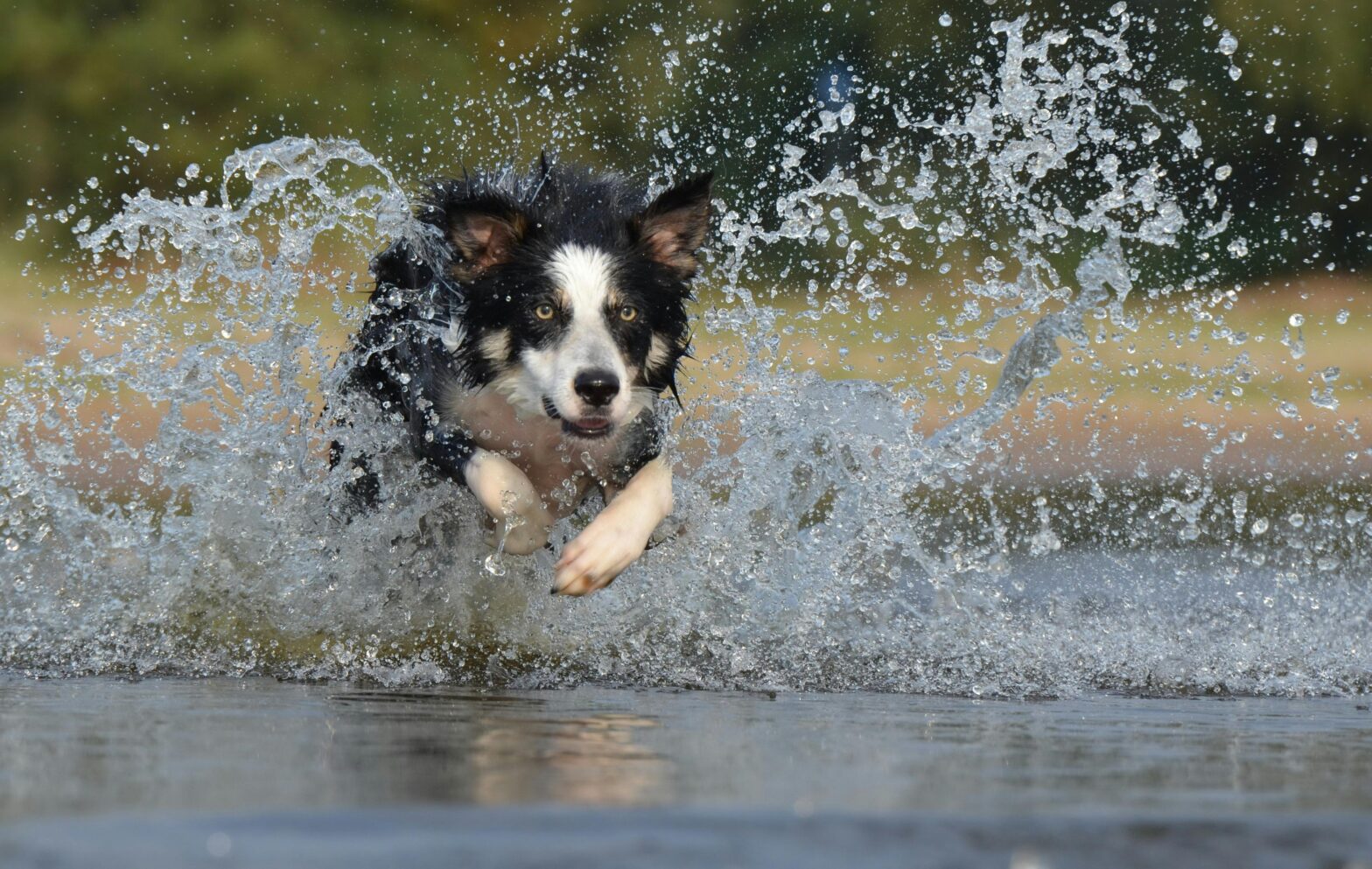This is part 1 in our three-part series on understanding your dog’s body language.
Your dog just gave you The Look. You know the one. Head tilted, ears doing something… interesting, and a stare that feels like they’re trying to telepathically communicate the meaning of life.
You stare back.
They stare back.
It’s like the world’s most awkward conversation where neither person speaks the same language, but you’re both pretending you totally understand what’s happening.
Finally, you break. “What? What do you want?”
Your dog does that thing where they huff dramatically and walk away, probably thinking, “Humans. So clueless.”
And they’re not wrong.
Your dog has been running a full-scale communication campaign this entire time. Every tail position, every ear adjustment, every subtle body shift is them trying to tell you something important. Meanwhile, you’re over here playing charades with a species that’s been perfecting nonverbal communication for thousands of years.
It’s like they’re sending you detailed text messages, and you’re responding with random emojis, hoping something works.
But that also means once you learn their language, every “weird” moment starts making perfect sense. That time your usually friendly pup suddenly seemed “antisocial” at the park? They were probably feeling overwhelmed and telling you so. That “stubborn” moment when they wouldn’t come inside could’ve been stress signals you missed entirely.
You don’t need to become a dog whisperer overnight. You just need to start paying attention to the conversation that’s already happening. Your dog’s body is basically a mood ring with fur, and once you know how to read it, you’ll wonder how you ever lived without this superpower.
While dogs communicate with their entire body—ears, eyes, posture, the works—let’s start with the most misunderstood signal of all: the tail. Because if you think wagging always means happy, you’re about to have your mind blown.
At The Good Paws, we want to help bridge the communication gaps with your best friend in the best (and good-est) way possible. So let’s crack this code together. Because your pup has been waiting patiently for you to learn their language, and honestly, it’s about time we caught up.
The Wagging Lie We All Believed
Let’s talk about the biggest lie we’ve all been told about dogs: that wagging equals happy. If that were true, then explain why your neighbor’s dog was wagging their tail right before they snapped at the mailman. Or why your usually chill pup was doing that weird stiff wag before they got into it with another dog at the park.
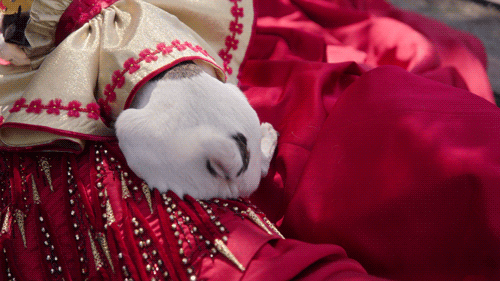
When your dog wags their tail, it’s emotionally aroused. That’s it. Happy, stressed, excited, nervous, frustrated—it all gets the tail moving.
Think of it like this: if human emotions made our arms flail around, you’d see people waving their arms when they’re thrilled about pizza delivery and when they’re panicking about a spider. Same energy, totally different feelings.
The science backs this up. Researchers have found that tail wagging is “frequently associated with both positive and negative arousal,” which means your dog’s tail is like an emotional speedometer, not a happiness meter.
It gets more interesting.
Dogs actually wag differently depending on what they’re feeling.
The Direction Drama (Yes, Really)
Dogs wag in different directions due to different emotions: to the right when they’re feeling positive and to the left when they’re feeling negative. I know, I know. You might now be thinking, “Great, now I need to become a tail-direction detective!” But stick with me for a moment here.
When dogs see their owners or familiar, friendly people, they show a “right-side wagging bias,” meaning the tail moves more to their right side. But when they encounter something that makes them want to back away, like an unfamiliar, dominant dog, the wag shifts to the left side.
And other dogs can see these differences. Research shows that when dogs watch videos of other dogs wagging, they get more stressed watching left-biased wags compared to right-biased ones.
Reading the Tail Position Playlist
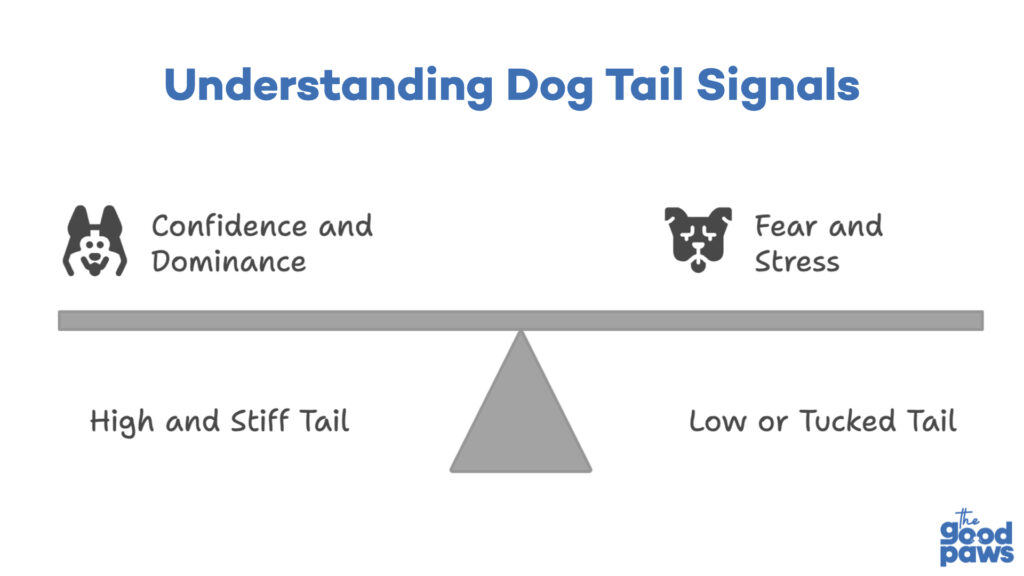
Now that we’ve established that wagging isn’t always sunshine and rainbows, let’s learn what different tail positions actually mean:
High and Stiff: “I’m the Main Character Here”
When your dog’s tail is high and rigid (whether it’s wagging or not), they’re feeling confident and alert. Sometimes too alert. Studies show that the higher the tail position, the more assertive or aroused the dog is feeling. If you see this combined with a stiff body and intense stare, your pup might need a little space to decompress.
Neutral and Chill: “Everything’s Cool, Hooman”
A relaxed tail in its natural position (which varies by breed) typically means your dog is content and unstressed. This is your dog’s version of sitting back with a cup of coffee, just taking in the world without any particular agenda.
Low or Tucked: “Can We Please Go Home Now?”
A low or tucked tail usually signals fear, stress, or uncertainty. Your dog is trying to make themselves smaller and less noticeable. This is their way of saying, “This situation feels like a lot right now.”
The Speed and Style Matter Too
Fast, frantic wagging? High arousal. It could be excitement, but it could also be overstimulation or stress. It’s like a kid who’s had too much sugar bouncing off the walls.
Slow, side-to-side sweeps? Those are usually good signs. Relaxed, genuinely happy vibes.
Small, tight wags? Your dog is feeling tentative or unsure. They want to be social, but they’re not quite confident about the situation yet.
Breeds Matter, Too
Here’s something that’ll make you feel better about all the times you’ve misread your dog: different breeds make this whole tail-reading thing way more complicated.
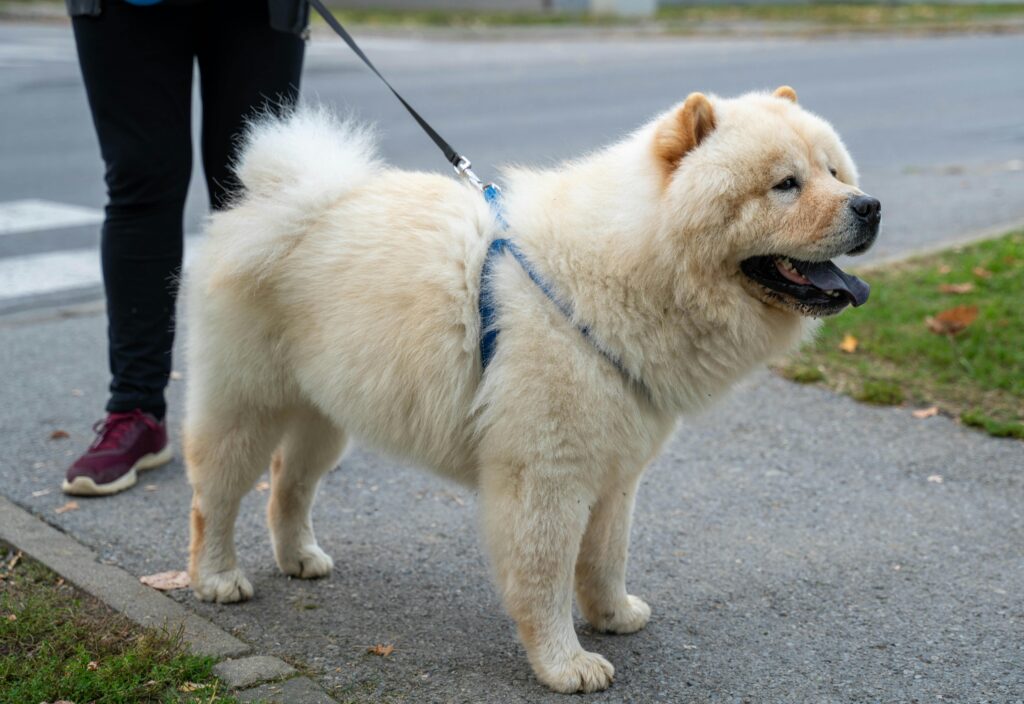
A Chow Chow naturally carries their tail curled over their back, so “high” looks different on it than on a Golden Retriever. Meanwhile, Italian Greyhounds naturally carry their tails low, so their “neutral” might look worried to someone used to other breeds.
Therefore, learn your individual dog’s baseline. What their tail look like when they’re genuinely relaxed can be your starting point for reading all their other emotions.
Decode This Tail!
Next time you’re at the dog park, try watching the tails before looking at anything else. Can you spot the difference between:
- The helicopter tail of a dog who just spotted their best friend
- The high, stiff wag of a dog who’s not sure about a new situation
- The low, uncertain wag of a pup who wants to say hi but feels nervous
Once you start seeing these differences, you can’t unsee them. And your dog will probably appreciate having a human who finally understands what they’ve been trying to say all along.
From us at The Good Paws to you—from confused stares to confident tail reads—it’s all good.
Your dog’s tail is having a whole conversation with you. You just need the translation guide to join in.
Got a tail-reading success story? Drop it in the comments or DM us @thegoodpawsclub, because when it comes to understanding our dogs, we’re all still learning!
About the author: Amritesh Mukherjee is a writer, journalist, editor and companion to the handsomest doggo of the universe, Dusky.

